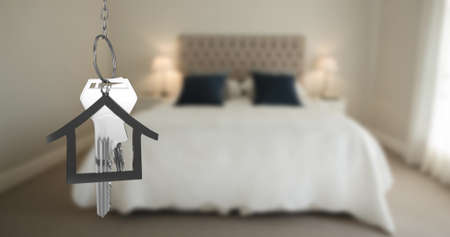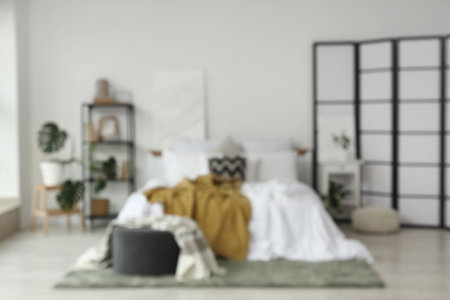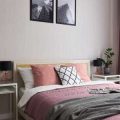Introduction: The Harmony of Old and New
In the heart of Britain, Victorian and Edwardian houses stand as elegant reminders of bygone eras, their ornate details and stately rooms echoing with stories of the past. Yet, even within these historical walls, the desire for comfort, balance, and wellbeing remains ever-present. This is where Feng Shui—a practice rooted in Eastern philosophy—finds its place among the fireplaces and bay windows of British homes. While at first glance it may seem an unlikely pairing, exploring Feng Shui in the context of British heritage homes reveals a fascinating dialogue between tradition and adaptation. Victorian and Edwardian architecture offers both unique challenges and opportunities for creating bedroom harmony. From high ceilings to intricate mouldings and quirky room layouts, every feature invites us to reimagine how energy flows through our most personal spaces. By blending ancient wisdom with the rich character of historical British design, we can create bedrooms that nurture both body and spirit—where old-world charm meets contemporary wellbeing.
Victorian and Edwardian Architecture: Features that Influence Energy Flow
When stepping into a bedroom within a Victorian or Edwardian house, one is immediately greeted by the elegance of British heritage. These homes, rich in character, offer distinctive architectural features that shape the movement of chi—the vital life force—throughout the space. In the practice of Feng Shui, understanding these unique elements is key to transforming your bedroom into a sanctuary of balance and vitality.
Typical Layouts: The Stage for Energy
Victorian and Edwardian bedrooms often boast generous proportions, with rooms arranged off long hallways or clustered around grand staircases. Unlike modern open-plan living, these layouts naturally segment energy flow, creating both opportunities and challenges for harnessing positive chi. Consider how doors are positioned; in many period homes, bedroom doors face directly onto corridors or staircases, which can channel energy too swiftly into resting spaces. Gentle barriers—like a well-placed chair or screen—can slow this rush, encouraging calm and restorative vibes.
High Ceilings: Uplifting or Overwhelming?
One hallmark of Victorian and Edwardian design is the lofty ceiling, often adorned with ornate plasterwork. High ceilings give an uplifting sense of spaciousness but may cause energy to dissipate upwards and leave the room feeling cold or ungrounded. To anchor chi, opt for layered lighting and tactile textiles—think lush rugs and heavy drapes—to draw energy back down to where you sleep and dream.
Bay Windows: Framing Light and Flow
Bay windows are quintessentially British, flooding bedrooms with natural light and offering captivating views over leafy streets or manicured gardens. Yet their protruding form can sometimes disrupt harmonious energy patterns. Positioning the bed so it doesnt align directly with the window can help maintain privacy and prevent chi from flowing out too quickly. Window seats or low shelves beneath the bay create inviting nooks that help gather positive energy.
Fireplaces: The Heart of the Room
A fireplace is more than just an architectural focal point—it represents the element of fire in Feng Shui, symbolising warmth and transformation. However, an unused hearth may act as a void, potentially draining energy if left neglected. Adorn your fireplace with cherished objects or candles to rekindle its vibrancy and support balanced chi throughout your bedroom.
Summary Table: Architectural Features & Feng Shui Impact
| Feature | Feng Shui Impact | Tips for Harmony |
|---|---|---|
| High Ceilings | Energy disperses upwards | Add cosy textiles; use pendant lighting |
| Bay Windows | Chi may escape outward | Create seating nooks; avoid placing bed in direct alignment |
| Fireplace | Adds warmth but may drain energy if unused | Keep decorated; use candles or flowers |
| Typical Layouts | Segmented flow; fast-moving chi from corridors/stairs | Use screens/furniture to slow energy at entrances |
A British Sensibility in Every Detail
The architecture of Victorian and Edwardian bedrooms is woven deeply into the fabric of British life—each cornice, sash window, and mantelpiece telling its own story. By tuning into these features through a Feng Shui lens, you can honour tradition while cultivating a restful retreat where good energy lingers long after dusk falls.

3. Selecting the Ideal Bedroom Location
In the labyrinthine corridors and high-ceilinged chambers of Victorian and Edwardian houses, choosing the right bedroom is both an art and a mindful practice. Original British floor plans often place bedrooms upstairs, away from the bustle of the main parlour, but over time, extensions and clever conversions have created new possibilities—and new challenges—for finding a serene sleeping space. Begin by honouring the home’s architectural spirit: if possible, select a bedroom that faces east or southeast to welcome gentle morning light, as this aligns with traditional Feng Shui principles and brings a soft British dawn into your day. Avoid rooms directly above kitchens or busy living areas; in many period homes, these spaces carry the lingering energy of daily life—clattering teacups and family gatherings—which can unsettle sleep. If your home has been extended or reconfigured, pay attention to how old meets new: bedrooms in modern loft conversions or rear additions may feel disconnected from the rest of the house’s energy flow. To remedy this, introduce elements like wooden furnishings or soft textiles that echo the original features, creating harmony between eras. For those fortunate enough to have a choice of rooms, avoid spaces at the front of the house facing busy roads—a common feature in Britain’s terraced streets—as external noise and movement can disturb restful energy. Instead, look for rooms set towards peaceful gardens or courtyards, where the calm presence of nature invites tranquility. Ultimately, let intuition guide you: walk through each potential bedroom and notice how you feel. The ideal space should evoke a sense of quiet contentment—a gentle hush amid London drizzle or Cotswold birdsong—that reflects both Feng Shui wisdom and the unique character of your British home.
4. Arranging Furniture: Beds, Wardrobes, and Tradition
Bedrooms in Victorian and Edwardian houses often echo a rich sense of history with their high ceilings, ornate cornices, sash windows, and original fireplaces. Yet, these period features can pose unique challenges when arranging bedroom furniture according to Feng Shui principles. The key is to find harmony between the energy flow (Qi) and the distinctive character of British heritage homes. Below are practical tips for positioning beds, wardrobes, and other essential pieces without compromising the historic charm or spatial constraints.
Bed Placement: The Heart of the Room
The bed is the focal point in any bedroom, particularly so in period properties where grand headboards and statement bedsteads were once the norm. For optimal Feng Shui:
- Avoid placing the bed directly under a window, as this may disrupt restful sleep due to drafts and fluctuating Qi. Instead, position the bed against a solid wall for support—ideally not sharing a wall with the bathroom or main door.
- Maintain clear access on both sides to encourage balance in relationships. In narrow Victorian rooms, use compact bedside tables to create symmetry without crowding.
- If possible, keep the bed away from original fireplaces. If unavoidable, use soft textiles or a decorative fire screen to soften any sharp energy (Sha Qi).
Wardrobes and Storage: Maximising Space Respectfully
Victorian and Edwardian bedrooms rarely featured built-in wardrobes; armoires or freestanding closets were typical. With modern needs for storage, it’s important not to block natural light or original features like alcoves and skirting boards.
| Furniture | Best Placement | Feng Shui Benefit | British Heritage Tip |
|---|---|---|---|
| Bed | Solid wall, diagonal from door if possible | Security & restful sleep | Avoid blocking fireplace or bay window views |
| Wardrobe/Armoire | Against inner walls, not near doors/windows | Stable energy; avoids blocking light flow | Select styles that complement cornices & high ceilings |
| Dressing Table | Near natural light but not facing bed directly | Positive self-reflection & clarity of mind | Utilise bay windows or alcoves where space allows |
Navigating Quirks and Character Features
Sash windows and chimney breasts: Use these features as anchors for your layout rather than obstacles. Place seating or storage trunks beneath windows rather than bulky items that could restrict airflow.
Coving and dado rails: Choose furniture heights that sit comfortably below these lines to maintain visual continuity.
Cornices and ceiling roses: Opt for low-profile lighting above beds to highlight period details while keeping energy gentle.
Sensitive Solutions for Limited Spaces
If you’re dealing with an especially snug Victorian box room or an oddly shaped Edwardian nook, consider multifunctional furniture such as ottomans with hidden storage or bespoke shelving fitted into alcoves. Always keep pathways clear—from door to window—to let fresh Qi circulate freely through the room’s storied bones.
A Final Thought on Tradition and Tranquillity
The art of arranging bedroom furniture in Britain’s grand old homes lies in honouring their timeless elegance while inviting restorative energy within. With mindful placement and respect for original features, your bedroom becomes not just a sanctuary of style but a haven of harmonious living—true to both Feng Shui wisdom and British tradition.
5. Colour Schemes and Textiles: A British Palette
When curating a bedroom within the storied walls of a Victorian or Edwardian home, the harmony of colour and texture becomes an essential element in nurturing positive Feng Shui energy. The British approach celebrates a nuanced palette—think muted sage greens reminiscent of dew-kissed gardens, powdery blues echoing a Cornish sky, and deep burgundies inspired by heritage drawing rooms. These shades not only reflect the natural world but also ground the space, inviting restful sleep and gentle awakening.
Textiles in these homes carry their own quiet magic. To truly honour British tradition while enhancing your bedroom’s Feng Shui, incorporate fabrics with history and heart. Florals, whether delicate Liberty prints or bolder chintz patterns, evoke the romance of English meadows and cottage gardens. Damasks and rich velvets add an air of stately comfort, perfect for creating a cocoon-like retreat that feels both luxurious and familiar. Layering is key: try woollen throws at the foot of the bed, crisp cotton sheets beneath, and heavy drapes that buffer outside noise and light—each textile adding to the room’s sense of calm enclosure.
For those wishing to balance tradition with modern sensibility, seek out subtle juxtapositions: a plush velvet cushion atop a vintage iron bedstead; hand-embroidered linens mingling with sleek contemporary lamps. By weaving together these quintessentially British tones and fabrics, you not only pay homage to your home’s architectural legacy but also foster an atmosphere where energy flows gently, dreams unfold sweetly, and every morning brings a sense of renewal.
6. Balancing Modern Needs with Period Charm
If you live in a Victorian or Edwardian home, you’ll know the unique pleasure of waking to high ceilings, ornate cornices, and sash windows filtering the gentle British light. Yet, these period sanctuaries must serve modern lives—think laptops by the bedside, streaming films, and wardrobes bursting with twenty-first-century fashion. Here’s how to honour both heritage and harmony, blending technology and storage into your bedroom while keeping its Feng Shui energy balanced.
Integrating Technology Thoughtfully
Technology is a necessity, but it can disrupt the serene chi flow so prized in Feng Shui. In a British setting, opt for discreet solutions: hide charging stations inside antique writing desks or repurpose a Victorian dressing table as a media console. If a television is essential, consider an armoire or a period-appropriate cabinet to conceal it when not in use. Choose muted metallics or classic woods for cords and speakers to blend seamlessly with the original features of your room.
Smart Storage Solutions with Heritage Flair
Victorian and Edwardian bedrooms often lack built-in wardrobes. Instead of modern flat-pack units, seek out vintage trunks at local antiques fairs or invest in bespoke cabinetry that echoes traditional panelled doors. Open shelving can display beloved books or keepsakes—just ensure shelves are orderly to avoid stagnant energy. Use baskets woven from British willow to corral clutter under the bed, keeping chi flowing freely.
Embracing Modern Comforts Mindfully
A king-size bed may be your dream upgrade, but respect the scale of your period room; oversized furniture can stifle movement and disturb harmony. Opt for beds with simple headboards in natural materials like oak or linen, evoking timelessness. Layer up with soft wool throws and plump pillows in heritage checks or florals—cosy touches that nurture both comfort and connection to place.
Lighting: Bridging Past and Present
Swap harsh overheads for warm pools of light. Place glass-shaded lamps on bedside tables or fit dimmer switches to existing chandeliers, marrying Victorian elegance with contemporary practicality. Candles in Georgian-style holders add a mystical glow, but always prioritise safety alongside atmosphere.
The Art of Harmonious Living
The secret is sensitivity: let each addition feel intentional rather than imposed. Honour the bones of your historic home with choices that nod to its era while subtly accommodating your lifestyle. When you balance modernity with tradition—and attune each item to support restful energy—you create a bedroom that’s not only beautiful but deeply nourishing for body and spirit.
7. Finishing Touches: Symbols, Art, and Objects
As you approach the final layer of your bedroom sanctuary in a Victorian or Edwardian house, it’s time to weave in those personal and quintessentially British finishing touches that speak to your soul. This is where the magic of Feng Shui meets the heart of British tradition, marrying intention with individuality.
The Power of Heritage and Heirlooms
Antiques and family heirlooms possess an energy all their own—a gentle reminder of lineage, memory, and continuity. Consider placing a cherished Edwardian jewellery box atop your dresser, or a delicate Victorian porcelain vase on the mantelpiece. These objects are more than décor; they are silent storytellers, lending depth and character to your space while honouring the past.
Botanicals: Nature’s Tranquil Touch
No British bedroom is complete without a touch of nature. Fresh flowers—perhaps a posy of lavender or fragrant English roses—infuse your room with life force, known in Feng Shui as ‘chi’. Botanical prints and pressed-flower art pay homage to the verdant gardens found behind so many period homes, nurturing peace and gentle vitality.
Art That Resonates
Select artwork that evokes serenity and joy. Soft watercolours of the Lake District, vintage botanical illustrations, or even abstract pieces that echo your inner landscape can shift the energy profoundly. Place artwork at eye level to invite calm rather than overwhelm; avoid images that stir melancholy or agitation.
Personal Symbols for Intention Setting
Bring in tokens that support your hopes and dreams—perhaps a small silver charm from a Cornish holiday, or a handmade ceramic dish from a local artisan. Allow each object to hold meaning: a stone from a Scottish loch for grounding, or an embroidered cushion with a favourite literary quote for inspiration.
Creating Harmonious Displays
Arrange your treasures with care, mindful not to overcrowd surfaces. In true British style, let each piece breathe—group items in odd numbers for balance and visual interest. A single candle on the bedside table can symbolise warmth and illumination, while an antique mirror (placed thoughtfully) can invite light without disrupting restful energy.
A Sanctuary Uniquely Yours
With these finishing touches—steeped in history, nature, artistry, and personal narrative—you transform your Victorian or Edwardian bedroom into a sanctuary that honours both Feng Shui principles and British sensibility. Let every object reflect who you are and what you cherish most; this is how harmony truly takes root.


